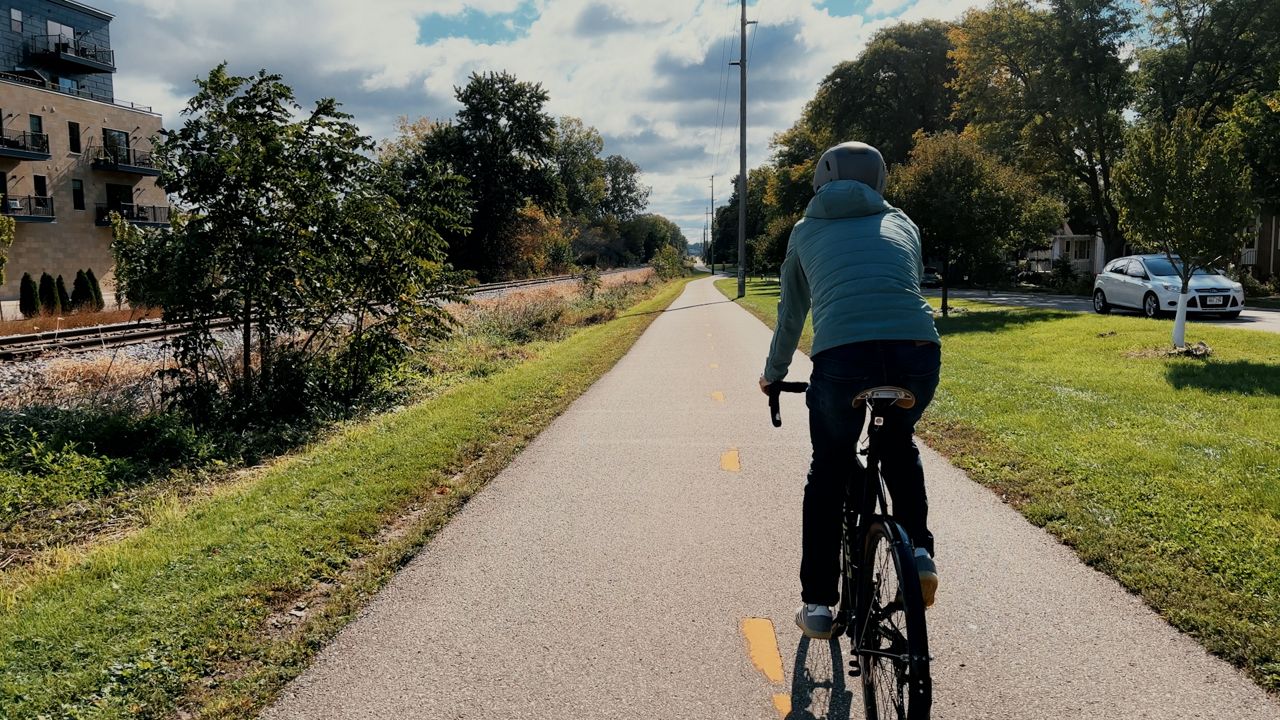MADISON, Wis. – Cities across the U.S. are racing to reduce their carbon footprint as the effects of global warming continue to impact air quality.
Some Madison residents, including Nick Platt, are doing their part by leaving the car in the garage.
“I think before the beginning of April I can count the number of car trips I made in town on one hand,” said Platt.
Platt is not a Madison native and said out of all of the cities he has lived in, this is by far the most bike-friendly one.
“It is really nice; I can leave home, I can go about thirteen miles round trip to work and only be off the bike path for about four blocks,” said Platt.
According to the United States Environmental Protection Agency, transportation produces about a quarter of the world's greenhouse gas emissions and passenger vehicles make up about half that figure.
Because of this, many emission cutting plans are focused around shifting away from combustion vehicles and to electric powered vehicles.
But the city of Madison is shifting away from vehicles all together and for many reasons, Platt said he is doing that same.
“I don’t want to contribute to extra traffic in the area,” said Platt. “Second, I think using my car for shorter trips is wasteful and third I really just enjoy getting out on my bike.”
Currently less than 1% of trips are taken by bicycles in most U.S. cities, but the Madison has been trying to change that. It is adapting its infrastructure to encourage alternative forms of travel like walking and biking.
“Cities are designed for cars and the leadership in Madison was smart enough to really make biking safe and so this is where I just repeat that we need to design cities for people and their health,” said Jonathan Patz, Vilas Distinguished professor at the University of Wisconsin.
Madison has the highest bikeability ranking out of the entire state of Wisconsin.
In the fall of 2015, Madison received a platinum designation by the League of American Bicyclists and now ranks as one of the five best cities for biking in the United States.
Patz said the problem is, most cities are not designed for bike travel and walking or biking on the side of the road could prove dangerous.
“I would not encourage people to bicycle for commuting unless it was safe,” said Patz. “It really leads to the need for urban planners and city leaders to design cities for people and not just for motorized vehicles.”

Patz said the $1.2 trillion Infrastructure Bill, which was passed in November, should help cities across the U.S. invest in biking and walking infrastructure.
“More bike lanes, more bike paths and so those combinations of electric vehicles and clean air and more bikeability through the infrastructure bill is a golden opportunity for advancing our public health,” said Patz.
The infrastructure bill authorized $1.44 billion a year for legacy transportation alternative programs that have the ability to improve biking and walking trails in cities across the U.S.
While Madison has become known for its high bikeability rating and even been named America’s second fittest city by the American Fitness Index, Platt said the infrastructure could still use some improvements.
”Like a road during rush hour where you know it just takes you a lot longer to get where you are going, it would be nice to see a little bit more volume in terms of the width of bike paths,” said Platt.



